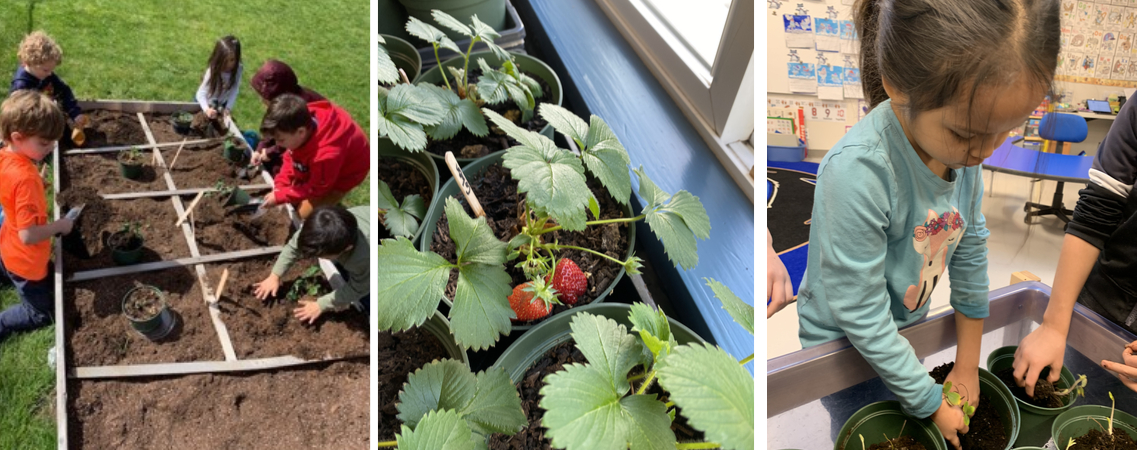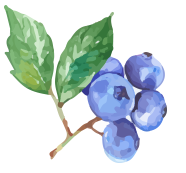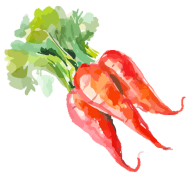Connecting Students to Agriculture
Common Ground: The Strawberry Project is a spring growing program for K-12 students that provides participating classrooms with both native and cultivated strawberry plants. Students work together to grow and harvest their strawberry plants and learn about this plant species, while deepening their understanding of First Peoples’ culture and traditions. BC Agriculture in the Classroom Foundation created The Strawberry Project in 2021 as a means of nurturing relationships between students across the province, and it is already one of our most popular programs!
This program brings students from local Indigenous schools together with students from BC public schools to broaden their knowledge of local, native plant species and to gain insight into one another’s different cultures. Through growing strawberries and exploring topics relevant to sustainability, the program aims to promote learning about agriculture and the importance of food, while increasing engagement between Indigenous and non-Indigenous youth.
The wild (or natural) strawberries that grow on BC’s mountain slopes are the ancestors of the cultivated varieties that we grow today on farms and gardens throughout much of the province. The strawberry plant is an engaging plant for students to grow and study, as it has all the key features of a typical plant species, with some unique characteristics.
First Peoples of North America have harvested wild strawberries for thousands of years as an important source of food and medicine. For them, the strawberry is also a symbol of peace and forgiveness. The Strawberry Project offers students a unique opportunity to connect with the Indigenous Ways of Knowing and Understanding, which is rooted in a deep respect for the land and encourages learning from all elements of creation, including plants and one another.

Fostering Knowledge of Indigenous Agriculture
Indigenous agriculture is shaped by a strong connection between culture and land, and it uses growing methods and practices that work with the local environment. The Strawberry Project offers students a hands-on opportunity to better understand Indigenous agriculture. It also fulfills the following educational objectives:
- Builds positive stories and perceptions of youth from neighbouring communities.
- Fosters an appreciation of cultures in each community through education and exchange.
- Develops students’ literacy skills and contributes to their development as informed global citizens. Increases motivation for agricultural learning and the interconnectivity of our ecosystems.
- Encourages themes of friendship, respect, diversity, and sustainability through a common project. Connects cultural-, literacy-, and relationship-building skills to the BC curriculum.
- Promotes community, leadership, sustainability, and connection to the local land.
How Does Common Ground: The Strawberry Project Work?
In April 2023, BC Agriculture in the Classroom Foundation provides participating schools with a Classroom Kit of supplies and materials for The Strawberry Project. Each kit contains the following resources:
- 20 everbearing strawberry bare-root plants;
- 10 wild strawberry plugs;
- 30 nursery pots;
- Funds to purchase soil from a local gardening centre;
- A step-by-step handbook for teachers, which includes goals and objectives, BC Curriculum Connections, First Nations Principles of Learning, background information, lessons, and educational resources.
Your Classroom Kit includes both wild strawberry and everbearing plants, which gives students the opportunity to grow and compare native strawberries with a cultivated variety. The strawberry plants will need to be planted and cared for indoors, then moved outdoors in spring when the risk of frost is over (depending on your planting zone). Our handbook has all the information you’ll need about planting and caring for your strawberry plants. By mid-June, students will enjoy their strawberry harvest!
Sign Us Up!
Common Ground: The Strawberry Project is a free program available to all K-12 public, independent, and First Nations schools in BC.
Applications for the 2025 - 2026 program are open from October 14 to December 15, click here to complete the application form.
Please contact the Program Coordinator at help@aitc.ca at any time during the school year if you have any questions about the program.
A Crop of Resources!
BC Agriculture in the Classroom Foundation has a number of resources available to enhance Common Ground: The Strawberry Project. All of our classroom resources are available as downloads or can be ordered from us. The Strawberry Project handbook contains lessons that are aligned with K-9 curriculum connections. Specifically, topics in the subject areas of Science, Physical Education and Health, Language Arts, Art, and Applied Design, Skills, and Technologies education are addressed.
Additional Resources
To enhance The Strawberry Project’s cross-curriculum teaching opportunities, we have additional K-12 classroom resources, including visuals, that provide helpful information on growing strawberries as well as other foods.
A Race Around the Strawberry Patch Board Game
Fresh Story — Strawberries — Intermediate
Fresh Story — Strawberries — Primary
Spotlight Series on Strawberries
Posters
Our posters are a great way to make visual connections and bring agriculture into your classroom!
Dig in for Dinner (English version)
Dig in for Dinner (French version)
What Does It Take to Produce Food? (available in both English and French)
Additional guidance, training, and support are available to teachers through BCAITC’s program staff.
Partners Make It Possible — Thank You!
Thank you to all of our partners for their support and help in making Common Ground: The Strawberry Project a success. Also, thank you to the dozens of teachers and Indigenous leaders who helped bring this idea to life.
Peace Arch Hospital Foundation
Additional thanks to Chantelle Trainor-Matties of Frettchan Studios for the wonderful artwork created for this project.
Join Us!
To find out how you or your business can support this exciting program, contact BC Agriculture in the Classroom Foundation or check out our Partnership Opportunities.
Teachers and Parents Ask the Best Questions
At this time, we are able to offer the program to 25 K-12 public school classrooms and 25 First Nations school classrooms every year.
After the last frost, which can be between April and May (depending on your planting zone).
The native strawberry plants ripen later in the spring (depending on the climate of your region), and the everbearing strawberry plants will start to produce fruit in May and will continue to do so throughout June. Fruit production of both the native and cultivated plants is affected by day length, temperatures, and climate zone.



